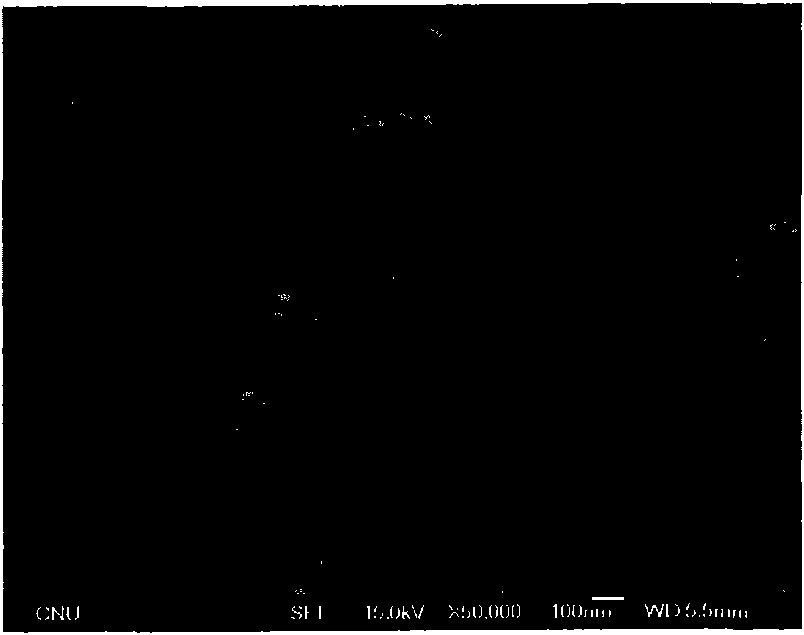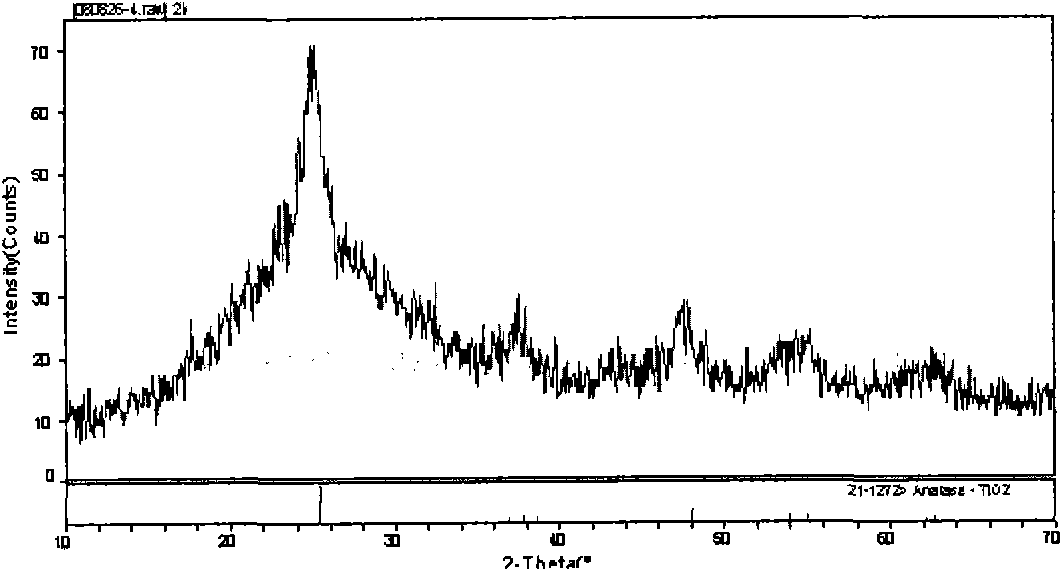Method of preparing transition metal oxide nano-particles
A technology of transition metals and nanoparticles, applied in the direction of nanostructure manufacturing, rare earth metal compounds, chromium oxide/hydrate, etc., can solve the problems of mass production obstacles, reproducibility reduction, pollution hazards, etc., and achieve easy reactivity, easy Controlling, Response Stabilizing Effects
- Summary
- Abstract
- Description
- Claims
- Application Information
AI Technical Summary
Problems solved by technology
Method used
Image
Examples
Embodiment 1
[0029] A peroxide-metalate solution having a Ti concentration of 0.14M was prepared by dissolving Ti metal powder (Aldrich, 268496) in a 30 wt% aqueous hydrogen peroxide solution. Then, isopropanol:water:nitric acid was mixed at a volume ratio of 1:1:0.1 to prepare a reaction solution, and 5 mL of the peroxide-metalate solution and 5 mL of the prepared reaction solution were mixed to prepare a mixed solution.
[0030] After filling the prepared mixed solution into an autoclave, a hydrothermal reaction was performed in an oven at 120°C for 2 hours to produce TiO 2 Anatase nanoparticles.
Embodiment 2
[0032] A peroxide-metalate solution having a Ti concentration of 0.005M was prepared by dissolving W metal powder (Aldrich, 510106) in a 30 wt% aqueous hydrogen peroxide solution. Then, isopropanol:water:nitric acid was mixed at a volume ratio of 1:1:0.14 to prepare a reaction solution, and 36 mL of the peroxide-metalate solution and 72 mL of the prepared reaction solution were mixed to prepare a mixed solution.
[0033] After filling the prepared mixed solution into an autoclave, a hydrothermal reaction was carried out in an oven at 98°C for 1 hour to produce WO with a hexagonal structure. 3 Nanoparticles.
[0034] figure 1 is a scanning electron micrograph of titanium dioxide manufactured in Example 1 of the present invention, figure 2 is the X-ray diffraction analysis result of titanium dioxide produced in Example 1, image 3 It is a scanning electron micrograph of tungsten oxide produced in Example 2.
[0035] Depend on figure 1 with image 3 It can be seen from the...
PUM
 Login to View More
Login to View More Abstract
Description
Claims
Application Information
 Login to View More
Login to View More - R&D
- Intellectual Property
- Life Sciences
- Materials
- Tech Scout
- Unparalleled Data Quality
- Higher Quality Content
- 60% Fewer Hallucinations
Browse by: Latest US Patents, China's latest patents, Technical Efficacy Thesaurus, Application Domain, Technology Topic, Popular Technical Reports.
© 2025 PatSnap. All rights reserved.Legal|Privacy policy|Modern Slavery Act Transparency Statement|Sitemap|About US| Contact US: help@patsnap.com



